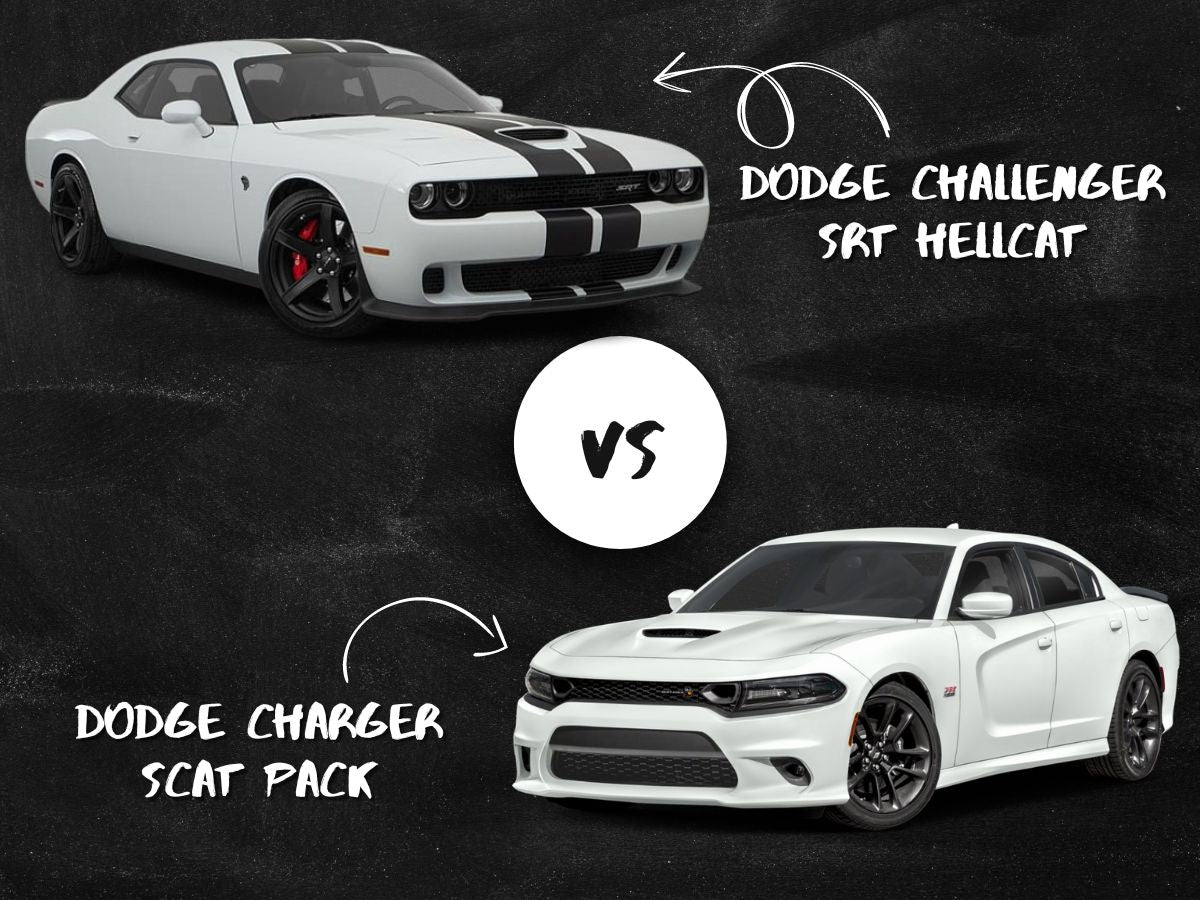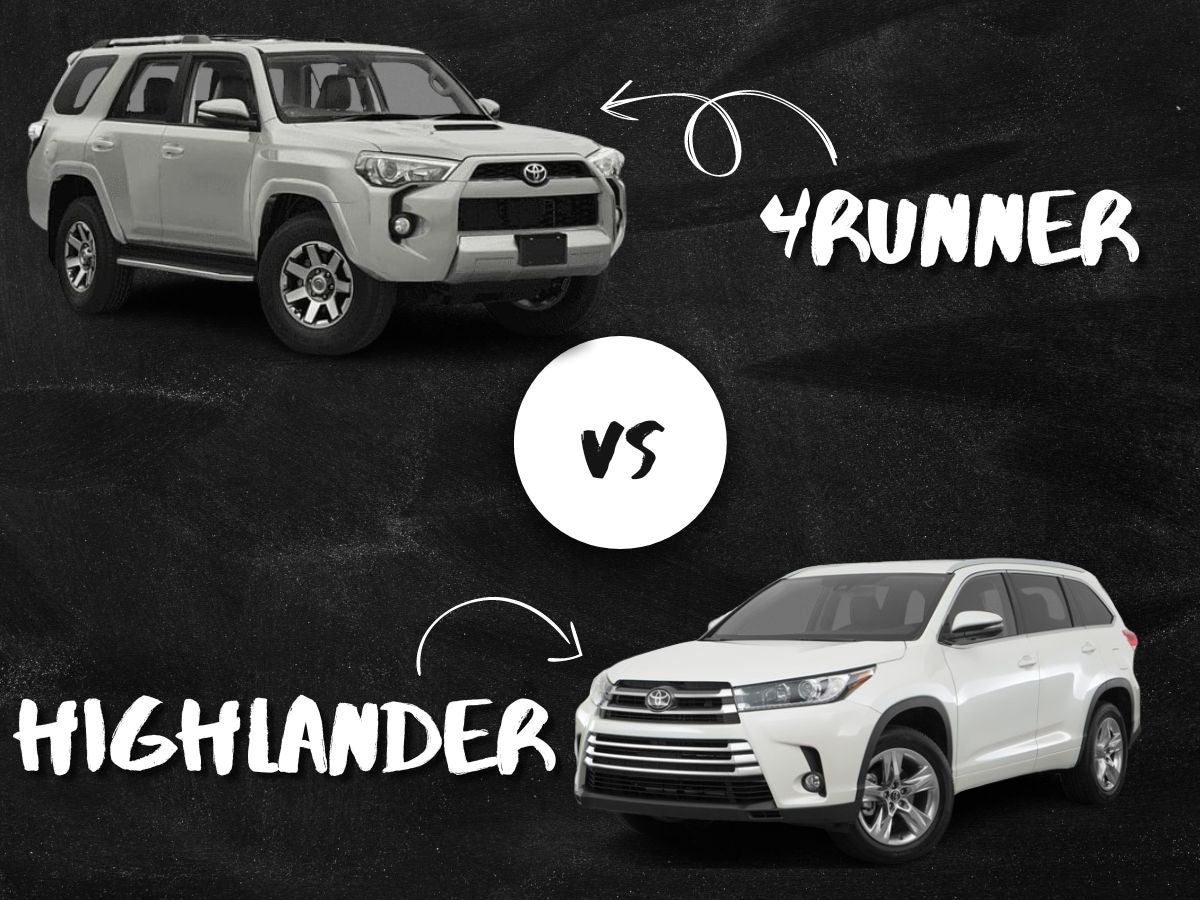The ongoing debate between Dodge’s Scat Pack and Hellcat models in the Charger and Challenger lines consistently perplexes consumers. With overlapping performance capabilities but divergence in other key areas like price and fuel efficiency, determining the superior option proves challenging.
This comprehensive guide analyzes the critical elements distinguishing the Charger Scat Pack and Challenger Hellcat, enabling an informed decision tailored to individual needs and preferences. Equipped with these insights, consumers can confidently select their ideal high-powered sedan.
High-Performance Heart: Engine and Power Comparison
The heart of any muscle car is its powerplant - for the Charger and Challenger, two formidable options exist in the Scat Pack’s 6.4L naturally aspirated V8 and the Hellcat’s supercharged 6.2L V8.
Horsepower marks the most glaring differentiation; the Scat Pack generates 485 hp, while the Hellcat produces 717 hp in standard form and a massive 797 hp in Redeye specification. Torque output sees a similar variance, with 475 lb-ft for the Scat Pack and 707 lb-ft for the Hellcat.
Ideally, consumers must determine if the Hellcat’s immense output warrants its demanding operating costs or if the Scat Pack supplies adequate grunt while enabling more economical daily driving.
Scat Pack 6.4L NA V8 Overview
- 485 horsepower
- 475 lb-ft torque
- 0-60 mph in 4.3 seconds (R/T Scat Pack)
- Quarter-mile in 12.4 seconds
Hellcat 6.2L Supercharged V8 Overview
- 717 horsepower (797 hp Hellcat Redeye)
- 707 lb-ft torque
- 0-60 in 3.6 seconds (Hellcat Widebody)
- Quarter-mile in 10.8 seconds
Exterior Styling and Dimensions
Visually, both vehicles deliver an aggressive, blunt-edged muscle car form. However, the dimensions differ slightly:
-
Charger Scat Pack
- Length: 200.8”
- Width: 75”
- Height: 58.5”
-
Challenger Hellcat
- Length: 197.9”
- Width: 75.7”
- Height: 57.6”
So while the Charger claims greater length, the Challenger counters with incrementally more width and height.
Functional exterior elements also showcase modest divergence. The Scat Pack sports functional hood scoops and splitters, while Hellcat models integrate larger intakes and more pronounced aero add-ons. Owners seeking styling statements will likely gravitate towards the more radically-designed Hellcat.
Daily Driveability Comparison
Prospective owners rightfully weigh each car’s suitability as daily transportation given their substantial power. Here, the Scat Pack rates favorably compared to the Hellcat in several key areas:
- Fuel Efficiency - Expect a 25 mpg highway rating in the Scat Pack against 22 mpg for the Hellcat
- Ride Quality - The Scat Pack’s suspension calibration focuses more on compliance than all-out performance
- Traction Control - Less power to put down enables easier modulation from the Scat Pack
- Carrying Costs - The Scat Pack’s engine requires less premium fuel and kinder maintenance schedules
Conversely, some factors see parity between both models:
- Passenger room and comfort levels
- Cargo capacity
- Availability of premium cabins
- Advanced technology features
On the whole, the Scat Pack fares better for daily livability, with the Hellcat demanding some compromise. Still, with care, either car can successfully serve daily commuting roles.
Cost Considerations: Scat Pack vs Hellcat Value Comparison
Perhaps above all else, purchase price and ongoing ownership costs determine which muscle sedan sees driveway duty. Here’s how affordability shakes out:
Scat Pack Pricing
- Base MSRP - $43,595
- Average Transaction Price - $46,100
- 5-Year Cost of Ownership - $52,800
Hellcat Pricing
- Base MSRP - $62,695
- Average Transaction Price - $69,000
- 5-Year Ownership Cost - $97,200
Reviewing these numbers exhibits the Scat Pack’s value advantage - roughly $15,000 cheaper to acquire and over $40,000 less to own half a decade. And opting for a lightly-used Scat Pack magnifies the savings further still.
Interior Design and Technology Comparison
Cabin quality and amenities influence driving enjoyment tremendously. Thankfully, both muscle sedans deliver handsome, driver-focused cockpits brimming with premium materials and technology.
Key Interior Features
- Leather upholstery
- Laguna leather upgrades
- Alcantara suede accents
- Carbon fiber and metal trim
- 8.4-inch Uconnect touchscreen
- Apple CarPlay/Android Auto smartphone integration
- Multi-zone automatic climate control
- Sound system options up to Harman Kardon with 19-speakers
Again, base-spec cars offer pleasing cabins, while loading up on options creates more luxurious environments. Critically, the Hellcat enables flashier aesthetics by integrating Hellcat logos and badging throughout its interior.
FAQs - Scat Pack & Hellcat Queries
Which model boasts quicker acceleration?
The supercharged Hellcat dominates acceleration, hitting 60 mph nearly a full second ahead of the Scat Pack and over 2-seconds quicker in the quarter-mile. Significant power advantages enable its blistering pace.
How rare are Hellcat models compared to Scat Packs?
With Dodge building nearly 3 times as many Scat Pack Chargers and Challengers versus Hellcats in 2022, the top models rate as far more exclusive. Their limited availability partially explains higher transaction prices.
What aftermarket modifications best improve Scat Pack performance?
Adding a quality cold air intake, less-restrictive exhaust, ECU tuning upgrade, sticky tires, and suspension lowering kit enable Scat Pack models to substantially improve acceleration, braking, and handling.
Which car holds its value better long-term?
Thanks to exclusivity and premier branding, Hellcat models enjoy markedly higher resale values across years of ownership. Supply and demand economics plainly favor the top performer.
Whatbody styles are available?
Both the Charger Scat Pack and Challenger Hellcat are offered solely as 4-door sedans. Only the standard Challenger coupe provides 2-door configurations.
Choosing Between Scat Pack & Hellcat
Consider the Scat Pack for:
- Lower purchase and ownership costs
- Increased daily livability and comfort
- Adequate straight-line performance for most drivers
The Hellcat excels for buyers wanting:
- Maximum acceleration capabilities
- Exclusivity and collectability perks
- Owning the Dodge Halo performance flagship
Here is a comparison table summarizing some key specs and features between the Dodge Charger Scat Pack and Dodge Challenger SRT Hellcat:
| Specs/Features | Dodge Charger Scat Pack | Dodge Challenger SRT Hellcat |
|---|---|---|
| Engine | 6.4L V8 | Supercharged 6.2L V8 |
| Horsepower | 485 hp | 717 hp (797 hp Hellcat Redeye) |
| Torque | 475 lb-ft | 707 lb-ft |
| 0-60 mph Time | 4.3 seconds | 3.6 seconds |
| Quarter Mile Time | 12.4 seconds | 10.8 seconds |
| Fuel Economy (Highway) | 25 mpg | 22 mpg |
| Base MSRP | $43,595 | $62,695 |
| Notable Performance Upgrades | Functional hood scoops and splitters | Larger intake, more aggressive aero |
| Daily Driveability | Better ride quality and fuel efficiency | More compromise needed |
| Resale Value | Good | Excellent |
While the Hellcat garners greater notoriety, selecting the Scat Pack enables enjoying ninety percent of its straight-line thrills at a sixty-percent discount. For muscling through daily commutes effortlessly, the Scat Pack prevails.
Let precise driving needs and budget determine the better muscle car option for your garage. With this comprehensive analysis, the choices become clear.




Leave a comment
This site is protected by hCaptcha and the hCaptcha Privacy Policy and Terms of Service apply.